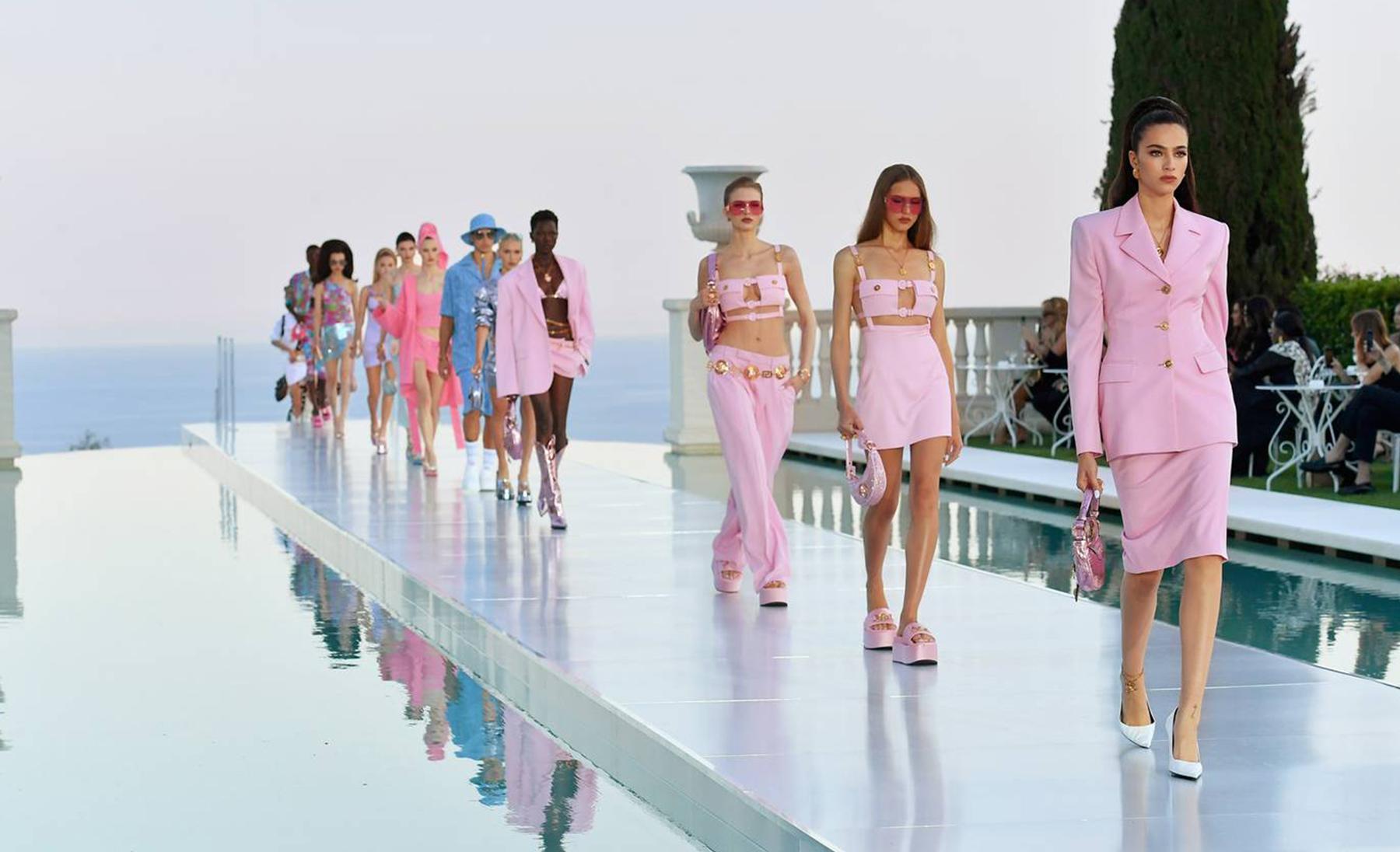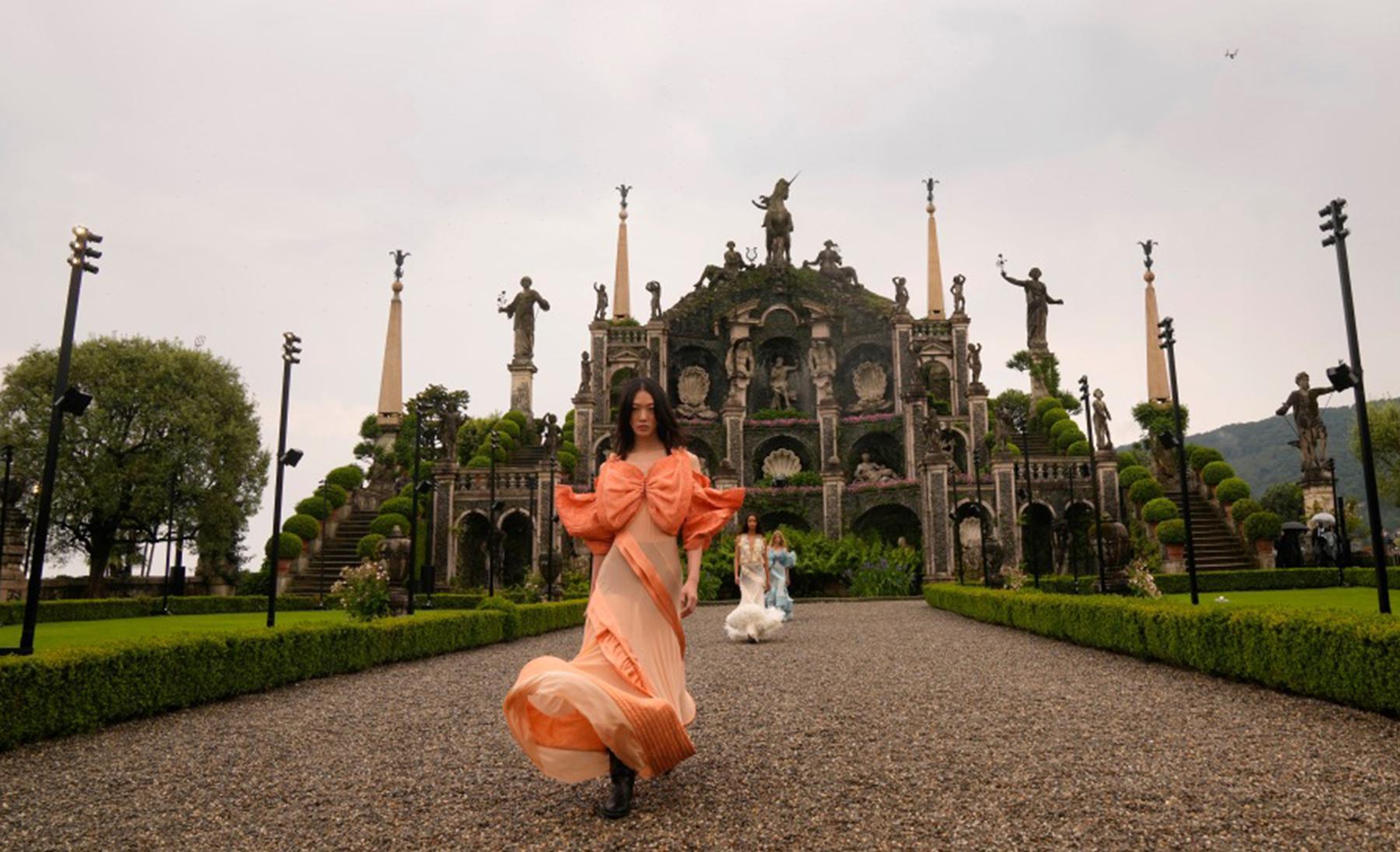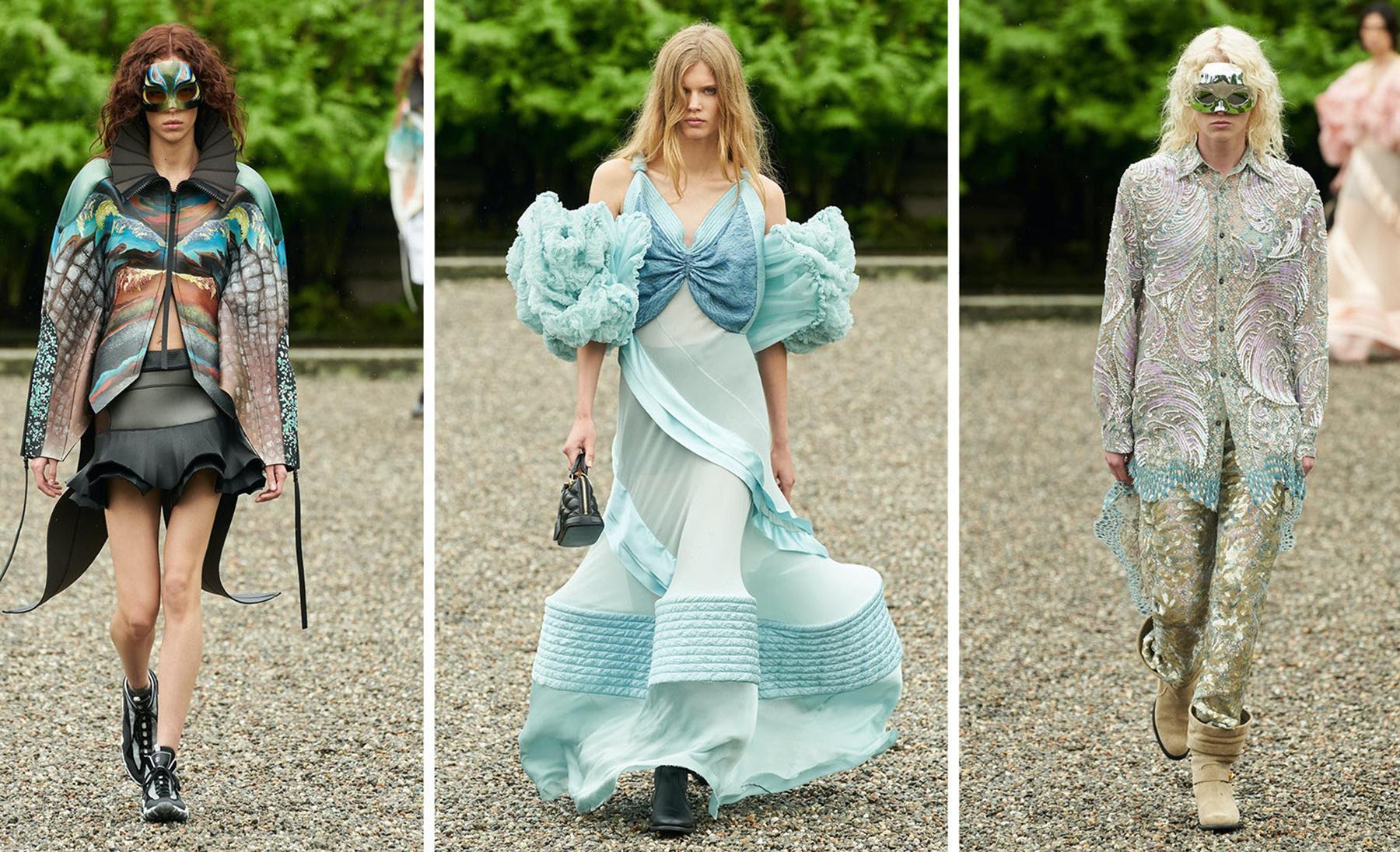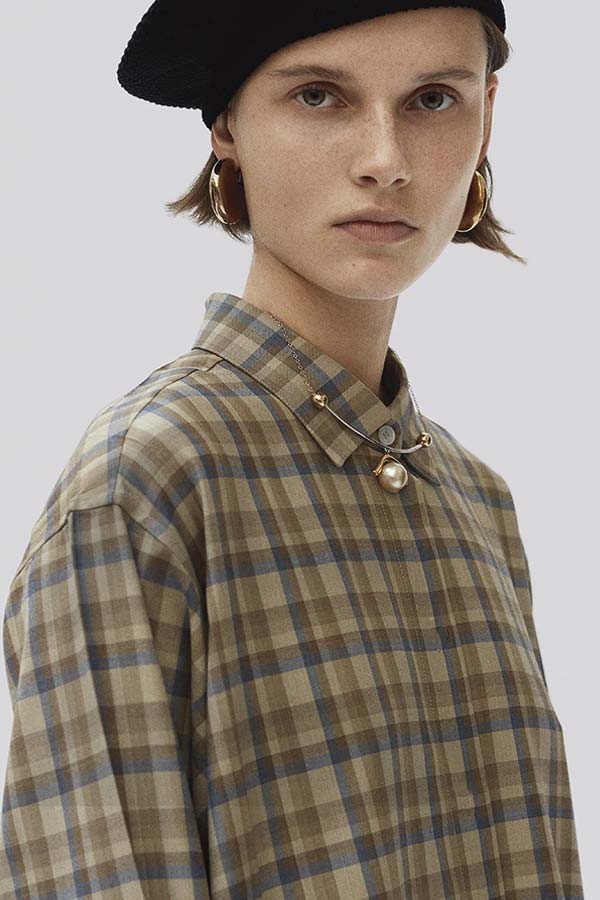
Gucci Resort at Gyeongbokgung
From a rise in online shopping, home-made shoots on iPhones, to avatars on catwalks, the pandemic seemingly forced a revolution in the fashion industry– or did it?
The British Fashion Council made history in 2020, when it became the first of the global Fashion Weeks to go digital. Journalists and sustainability experts claimed this was the way forward, as shows could be more accessible to wider audiences, buyers and editors wouldn’t travel hundreds of miles unnecessarily and designers could adopt tech-based strategies in order to showcase their collections. There was also much talk of eliminating the relentless back-to-back seasonal calendar in order to create a more sustainable approach for consumption and slower production methods.
The Guardian recently talked of how Copenhagen Fashion Week is leading the way in eco-credentials, but pointed out the double-standards around off-setting carbon emissions. In order to meet the zero waste requirement, brands from CHFW sent digital QR codes in place of embossed paper invitations. Single-use plastic was banned, show sets were minimal and all props had to be reused. However, members of the press and fashion buyers flew in from around the world to look at even more new clothing. Confusing much?
Meanwhile, this month, Guardian fashion editor Jess Cartner Morley, flew the mere 5521 miles from London to Seoul, to see the Gucci Cruise show. With Gucci bags retailing from £385.00 to £3,500, one wonders how relevant her review of the collection is for the regular Guardian reader – who’s average income is thought to be around £59,764!
According to Fast Company “fashion weeks accelerate climate change and create a lot of pollution. The shows create enormous quantities of waste, and flying attendees to shows around the world generates enough carbon emissions to power 42,000 homes for a year”.
So here’s the challenge for luxury fashion brands. Editors and buyers love an event, social media loves an event, celebrities love an event and fashion as ‘entertainment’ seems to be the way to generate hype and PR and hopefully consequent sales. With more and more pressure to sell more clothes and make more profit, brands yet again take their runway extravaganzas to another level. Meanwhile the editors and experts that heralded a brave new fashion world, have conveniently forgotten their post-pandemic predictions.
The ongoing Resort shows are a case in point with influencers, celebrities and editors recently being flown to LA, Seoul, Mexico City, Cannes and Lake Maggiore in Italy.

Margot Robbie at Chanel
First stop was LA, Paramount Studios, to be precise for the Chanel Resort show, that included Margot Robbie, Kristen Stewart, Riley Keough, Issa Rae, and Marion Cotillard on the front row, and a post-show performance by Snoop Dogg. Wait, it was a fashion show not Coachella or the Oscars, wasn’t it?
To be fair, Coco Chanel did create clothes for movies by directors including George Cukor and Jean Renoir, and Karl Lagerfeld was friends with Penelope Cruz and Tilda Swinton, amongst many other actresses in his 26 years at the label, so it made sense to pay homage to the the brand’s movie heritage on the Frow.

Chanel
Celebrities aside, what about the clothes? Despite taking over as artistic director in 2019, Virginie Viard hasn’t really made any significant changes to the Chanel handwriting. But this time there were glimpses of a more feminine, youthful approach, with sporty vibes, metallics and pops of bright colour. Think trust fund Barbie wears Chanel in Silver Lake. Personally I’d rather not, and apart from possibly a classic vintage black handbag, I have no desire to purchase anything, ever, by Chanel. But obviously that’s just me.

K-pop stars at Gucci
Hopping onto another first class flight to the Gucci Resort showat Gyeongbokgung, a former royal palace in Seoul, the Frow was yet again filled with celebrities, both international (Dakota Johnson, Elizabeth Olsen, Saoirse Ronan) and domestic (NewJeans’s Hanni, IU, Lee Jung-jae) no me neither!

Sophisticated or street at Gucci
The last show to be created by the design team before new creative director Sabato De Sarno takes over, the collection, successfully captured the look, and the feel of the city’s street style. Long loose silhouettes, low waisted baggy pants, cycle shorts, parachute maxi skirts, and some – not so subtle Korean print references, will surely appeal to local Gucci fans, who may be the target market for £1,400 cargo pants. But for me, it was the elegant pieces that looked the most directional. As the ladylike, sophisticated mood we saw at the A/W 23/24 shows continue to gain strength, my money is going on something beautiful that will last for years, not some baggy pants I can buy in Urban Outfitters.

Dior at the Colegio de San Ildefonso in Mexico City.
Next stop, Mexico City to see Maria Grazia Chiuri of Dior’s tribute to Mexico. Featuring collaborations with local designers, showcasing the country’s traditional techniques, cultural practices and beautiful craftsmanship, the collection can be traced back to Christian Dior’s very first collection in 1947, which included a dress called simply ‘Mexico’.

Dior
Heavily inspired by Frido Kahlo, the Resort 24 collection featured floaty shirts tucked into tired floor-length skirts, traditional huipil tops worn with slouchy denim and the nipped-waist, house-classic Bar jackets updated with velvet or embroidery. Gold strand necklaces, chunky silver belt buckles with butterfly motifs and leather cowboy boots completed the look. This blend of cultural references with a modern sensibility can only be achieved by Maria Grazia Chiuri, as it could potentially look a little bit West London does Frida Kahlo boho – which is sadly how it will inevitably be interpreted on the high street.

Dua Lipa x Versace at Chateau de la Croix des Gardes, Cannes
The devil works hard but fashion editors work harder – or is that Kris Jenner? Whatever – another plane ride – this time on to Cannes for the Donatella Versace and Dua Lipa collaboration. Honestly it must be so hard to think of what to wear to all these shows – and I’m not actually joking. What a nightmare, especially if they expect you to wear their label. I mean Versace – I just couldn’t. Or could I?

Dua Lipa x Versace
Presented at the Chateau de la Croix des Gardes, overlooking Cannes, this show was hi-octane glamour at its very best – even if Italian glamour meets North London street style is not your thing, this show was a triumph. Genius marketing, (Dua Lipa designing (!), Iris Law walking) the perfect combination of cute, meets cool design and fashion as entertainment on another level. Many traditional luxury labels have tried and failed to capture the illusive Millennial/Gen Z market, but watch out Gucci and LV, Versace are coming for you.

Louis Vuitton at Iso Bella, Lake Maggiore
And last but not least, – for now – was the Louis Vuitton show on Iso Bella, an island in Lake Maggiore that has belonged to Italy’s Borromeo family for 500 years. Glamorous yes, Catherine Deneuve, Oprah Winfrey, and Cate Blanchett, were among the 1,000 or so guests and the venue looked magical, but the clothes – oh the clothes. Sadly, I can’t find one honest review of the collection that was apparently inspired by ‘aquatic fantasy and mermaids’. I have no words, but designer Nicolas Ghesquière has lots, and so do all the fashion editors that are clearly angling for an invitation to his next resort show.
“We started with the idea that the girls were coming from the water, like mermaids of the lake, and they’re transforming into something else. By the end the mermaid becomes a flower, but maybe not a flower that exists.”
Nicolas Ghesquière

Louis Vuitton
So there we have it, the pandemic is over and the fashion industry is exactly the same as it always has been. In fact, in some cases it seems to be going backwards. Business of Fashion reported this week that four years after its creation, Hermès, Selfridges and Stella McCartney have left The Fashion Pact. Set up as a voluntary CEO-powered initiative, the members represent the decision-making power of roughly a third of the industry by volume and include luxury giants Kering, Chanel and Prada, Nike and Adidas, H&M Group and Inditex. So far, sadly it seems to have delivered little more than a handful of projects.
Whatever you think about the number of air miles/carbon footprint involved in a small group of buyers, editors and influencers travelling around the world for a couple of days at the time, the important thing for the fashion industry to remember is that climate change, sustainability, political statements, diversity and transparency are not made up trends to tap into for a season and then forget when something new and shiny comes along.
Maybe there’s lots of great work going on in the background. Let’s hope so, but one thing is for sure, we cant keep talking and not acting.
Perhaps we could start by not flying to Korea for 24 hours to look at clothes.






